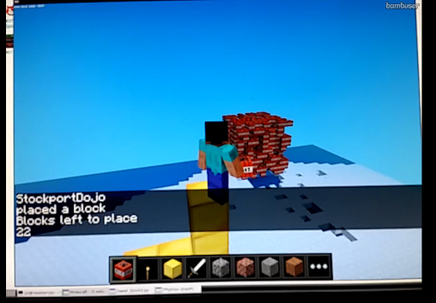IT'S A WRAP!
IT LASTED 24 HOURS
1000 + TWEETS
912 BLOCKS PLACED
AVERAGE 38 BLOCKS AN HOUR
REMOVE SLEEP TIME, 12 - 8
57 BLOCKS AN HOUR!
What is it?How long would it take collectively for Twitter users across the world to build a
10 x 10 x 10 sized cube of TNT in the Minecraft world? A day, a week, a year? This is the questions that I have set out to solve. The project is very simple, Twitter users reply to me or send me a keyword for example @dan_aldred test. This is picked up by through the Raspberry Pi via Python and Tweepy and then checked for the keyword. If the keyword is used then the code places a block of TNT at a random co-ordinate of one of the 1000 block locations of the overall cube. 1 tweet = one block 1000 tweets = 1000 blocks = the complete cube (It may require more than 1000, some blocks may be placed in the same location .) Working Concept Model |
TestingOn Tuesday August the 19th 2014 the speed cube test was successful, overall nine members of Twitter replied with the keyword which triggered the Python code to lay a block on TNT within a random set of co-ordinates, 5 x 5 x 5 a total of 125 blocks of TNT. The test was streamed live and all 49 minutes are watchable below! (If you really want to)
Example Test Stream |

